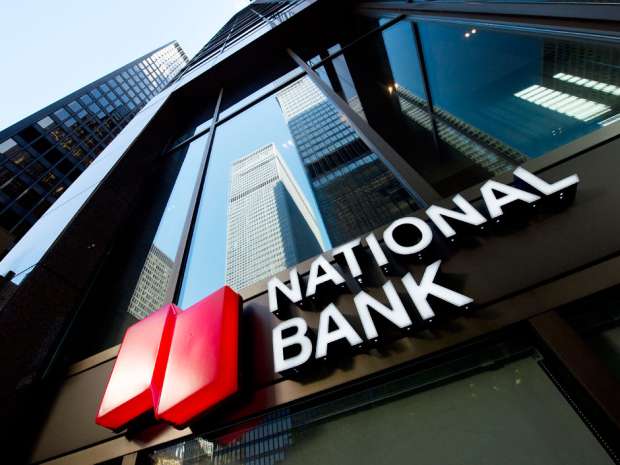by Elga Bartsch, PhD, Blackrock
Elga discusses how central banks could “go direct” and use unprecedented coordination between monetary and fiscal policy to deal with the next downturn. This is the fourth and final blog in a series on the topic of “Dealing with the next downturn.”
How will central banks tackle the next downturn? We believe an unprecedented response is needed when monetary policy is exhausted and fiscal space is limited. That response could involve “going direct” – finding ways to get central bank money directly in the hands of public and private sector spenders.
We believe policymakers should lay the groundwork for a credible plan to navigate the next economic shock that includes the coordination between monetary and fiscal measures. We lay out the contours of such a framework in our latest Macro and market perspectives. Absence of a credible plan is contributing to market anxiety and adding to the rush into the perceived safety of government bonds, in our view.
A practical approach would be to stipulate a contingency where monetary and fiscal policy would become jointly responsible for achieving the inflation target.
An emergency fiscal facility
To be sure, agreeing on the proper governance for such cooperation would be politically difficult and take time. That said, here are the contours of a framework:
- An emergency fiscal facility – that we refer to as the standing emergency fiscal facility (SEFF) – would operate on top of automatic stabilisers and discretionary spending, with the explicit objective of bringing the price-level back to target.
- The central bank would activate the SEFF when interest rates cannot be lowered and a significant inflation miss is expected over the policy horizon. See the SEFF funding level in the stylised chart at top above.
- The central bank would determine the size of the SEFF based on its estimates of what is needed to get the medium-term trend price level back to target and would determine ex ante the exit point. Monetary policy would operate similar to yield curve control, holding yields at zero while fiscal spending ramps up – see the yield at zero in the middle chart above. (The charts help sketch out the concept but are not intended to be a precise representation of how it might work.)
- The central bank would calibrate the size of the SEFF based on what is needed to achieve its inflation target – the red dotted line in the bottom chart above.
This proposed framework could include former Federal Reserve Chair Ben Bernanke’s temporary price-level target where the central bank commits to not only reach its inflation target but make up for past shortfalls (see Bernanke 2017 and our June 2019 work on inflation make-up strategies). Importantly, it complements it by specifying the mechanism – the SEFF – to push inflation higher. This is inspired by Bernanke’s 2016 proposal for a money-financed fiscal programme.
This approach improves on other fiscal approaches to providing stimulus when rates are at the effective lower bound (the minimum level of interest rates that the central bank can feasibly set), we believe. Similar to Furman and Summers (2019) and Blanchard (2019), it argues for the use of fiscal policy – yet it does not rely on rates staying below growth for the entire time needed to stimulate the economy.
Our proposal stands in sharp contrast to the prescription from proponents of modern monetary theory (MMT). They advocate the use of monetary financing in most circumstances and downplay any impact on inflation. Our proposal is for an unusual coordination of fiscal and monetary policy that is limited to an unusual situation – a liquidity trap – with a pre-defined exit point and an explicit inflation objective. Quasi-fiscal credit easing, such as central bank purchases of private assets, could be operated by the SEFF rather than the central bank alone to separate monetary and fiscal decisions.
A credible stimulus strategy would help investors understand what will happen once the monetary policy space is exhausted and provides a clear gauge to evaluate the systematic fiscal policy response. Spelling out a contingency plan in advance would increase its effectiveness and might also reduce the amount of stimulus ultimately needed. As former U.S .Treasury Secretary Henry Paulson famously said during the financial crisis: “If you’ve got a bazooka, and people know you’ve got it, you may not have to take it out.”
“Going direct” would provide stimulus without having to rely on rates going ever lower, and could help restore a more normal rate environment.
You can read our full paper on the subject here: Dealing with the next downturn
Elga Bartsch, PhD, Head of Economic and Markets Research for the BlackRock Investment Institute, is a regular contributor to The Blog.
Investing involves risks, including possible loss of principal.
Fixed income risks include interest-rate and credit risk. Typically, when interest rates rise, there is a corresponding decline in bond values. Credit risk refers to the possibility that the bond issuer will not be able to make principal and interest payments. Non-investment-grade debt securities (high-yield/junk bonds) may be subject to greater market fluctuations, risk of default or loss of income and principal than higher-rated securities.
International investing involves special risks including, but not limited to currency fluctuations, illiquidity and volatility. These risks may be heightened for investments in emerging markets.
This material is not intended to be relied upon as a forecast, research or investment advice, and is not a recommendation, offer or solicitation to buy or sell any securities or to adopt any investment strategy. The opinions expressed are as of September 2019 and may change as subsequent conditions vary. The information and opinions contained in this post are derived from proprietary and nonproprietary sources deemed by BlackRock to be reliable, are not necessarily all-inclusive and are not guaranteed as to accuracy. As such, no warranty of accuracy or reliability is given and no responsibility arising in any other way for errors and omissions (including responsibility to any person by reason of negligence) is accepted by BlackRock, its officers, employees or agents. This post may contain “forward-looking” information that is not purely historical in nature. Such information may include, among other things, projections and forecasts. There is no guarantee that any forecasts made will come to pass. Reliance upon information in this post is at the sole discretion of the reader. Past performance is no guarantee of future results. Index performance is shown for illustrative purposes only. You cannot invest directly in an index.
©2019 BlackRock, Inc. All rights reserved. BLACKROCK is a registered trademark of BlackRock, Inc., or its subsidiaries in the United States and elsewhere. All other marks are the property of their respective owners.
BIIM0919U-963011-1/1
This post was first published at the official blog of Blackrock.














